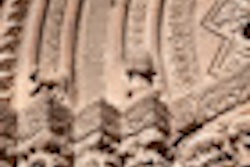
Spanish researchers turned in a highly impressive performance at this month's RSNA meeting by scooping four of the top-ranking awards available in the vast poster hall. Three of the prizewinners came from Barcelona.
At the Chicago congress, a total of 29 groups of researchers received a prestigious Magna Cum Laude for their education exhibits. Apart from the Spanish winners, Europeans failed to show up well. A team from Geneva was the only other Magna Cum Laude recipient to come from Europe.
Here are some of the key points of the four Spanish exhibits commended by the judging panels:
Why does the kidney enhance this way?
Lead author: Dr. Carlos Nicolau, Diagnosis Imaging Center, Hospital Clinic, BarcelonaThe administration of a contrast agent is an essential tool in the diagnosis of renal lesions, and most renal diseases cannot be differentiated from renal parenchyma without the administration of contrast agents. The type of enhancement depends on the macro- and microvasculature, and correlates with specific pathologic features. Characterization can be performed using CT, MRI, and contrast-enhanced ultrasound.
Bone tumors and soft-tissue tumors: correlation between ADC and histologic findings
Lead author: Dr. Javier Carrascoso Arranz, Hospital Universitario Quiron, MadridDiffusion-weighted imaging (DWI) provides qualitative and quantitative information that complements the morphologic information obtained with conventional MRI and with dynamic contrast-enhanced MRI. It should be routinely used in the diagnosis and monitoring of musculoskeletal tumors. In general, the apparent diffusion coefficient (ADC) value may be useful for diagnosing malignant nonmyxoid soft-tissue tumors. The correlation with pathologic examination can assist with an understanding of the ADC values. The ADC value is orientative, aiding in the differential diagnosis of atypical MR findings. It is not possible to differentiate low-grade chondrosarcoma from enchondroma, with ADC values. The ADC values on DWI scans holds promise as a valuable tool for monitoring the therapeutic response of primary sarcomas.
The ABC of percutaneous management of pseudoaneurysms
Lead author: Dr. Virgilio Benito Santamaria, Hospital de la Santa Creu i Sant Pau, BarcelonaA prompt diagnosis of pseudoaneurysms is essential because some unpredictable associated complications carry high morbidity and mortality rates. A proper knowledge of available embolization materials and percutaneous techniques is vital for the management of pseudoaneurysms and to choose the appropriate treatment.
Hemorrhagic and vascular complications in lung infections: high-resolution CT and pathologic findings
Lead author: Dr. Tomás Franquet, chief of section of thoracic radiology, Hospital de Sant Pau, BarcelonaCongenital pulmonary airway malformations (CPAMs) tend to be diagnosed on antenatal ultrasound or MRI, and often are seen in the first two years of life (80% to 85% of cases). Respiratory distress occurs in between 67% and 85% of patients. CPAMs may be diagnosed later in life with recurrent infection/hemoptysis (10% to 20% of cases). On imaging, a CPAM may enlarge to produce a mass effect on the adjacent lung and mediastinum. It communicates with the bronchial tree and typically contains air soon after birth. It has a multicystic appearance, and comprises a solid homogeneous mass, according to Franquet and colleagues.



















